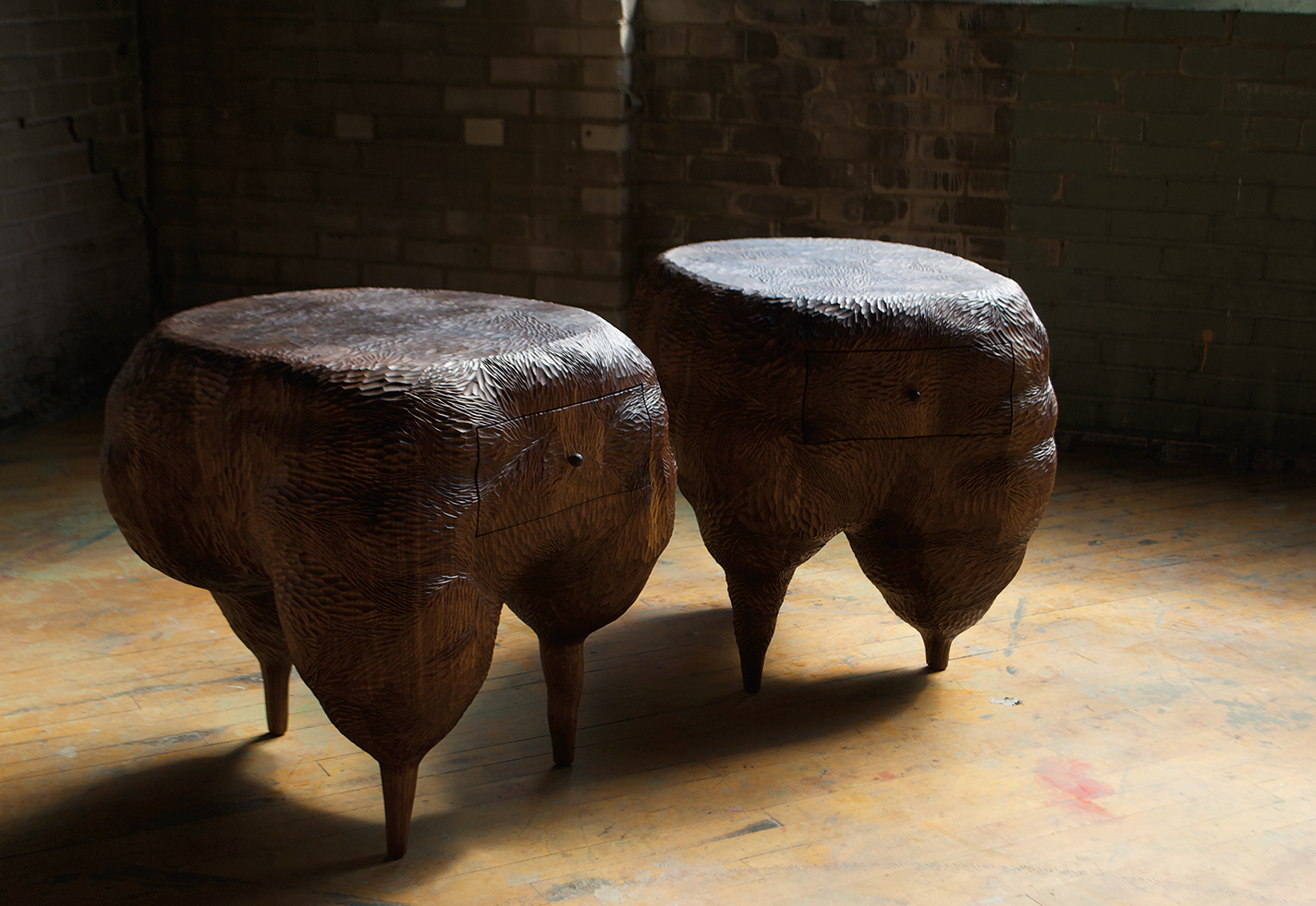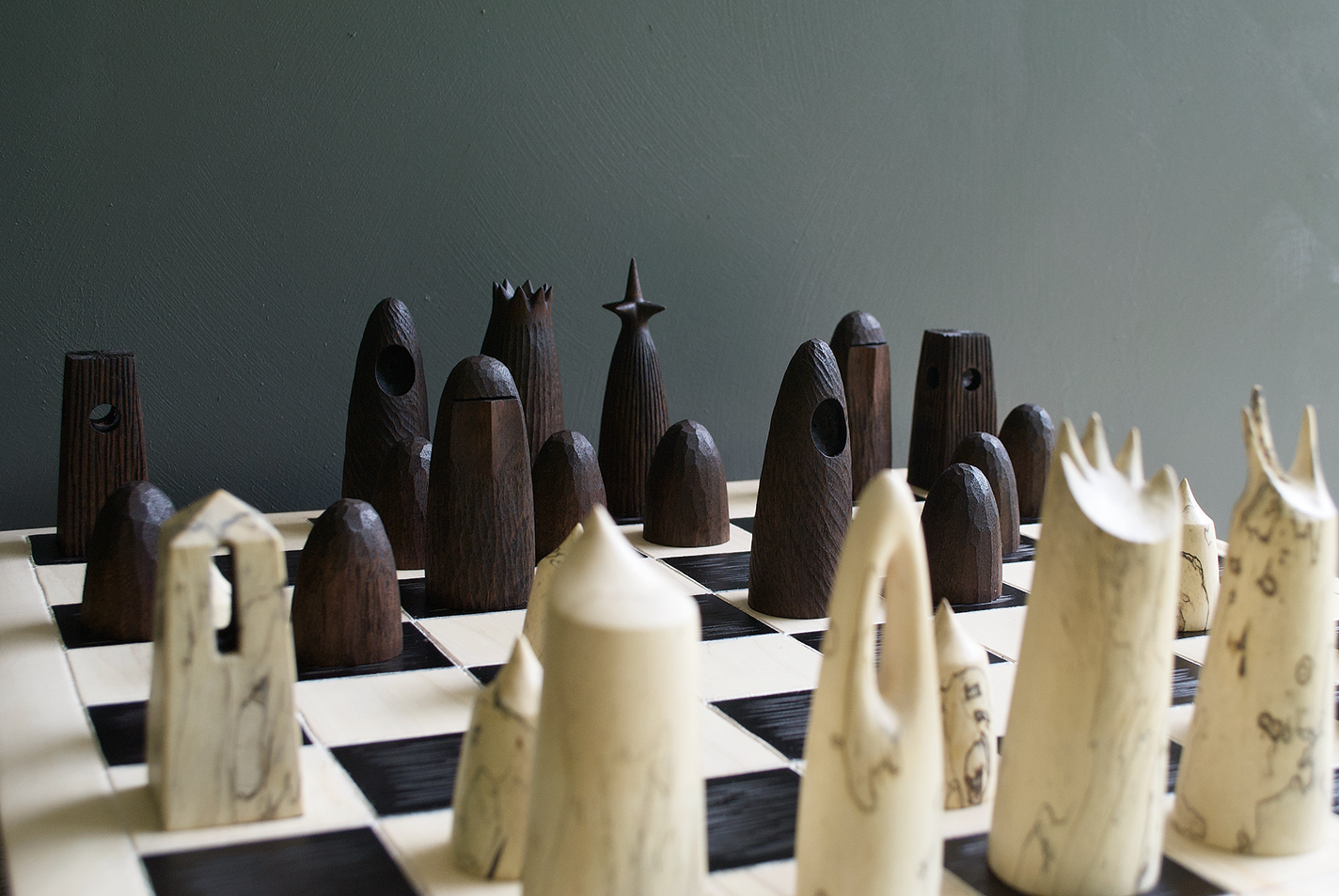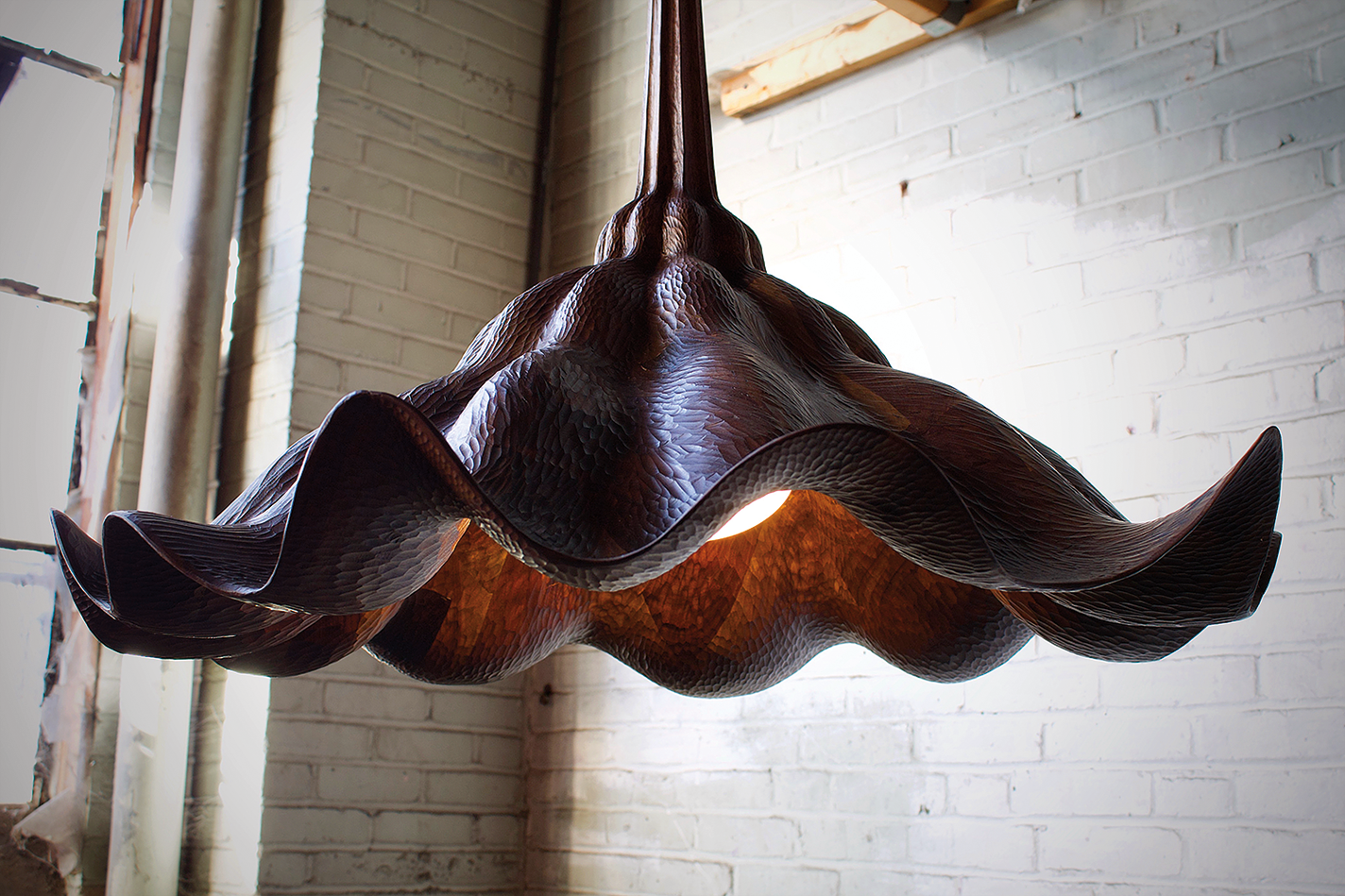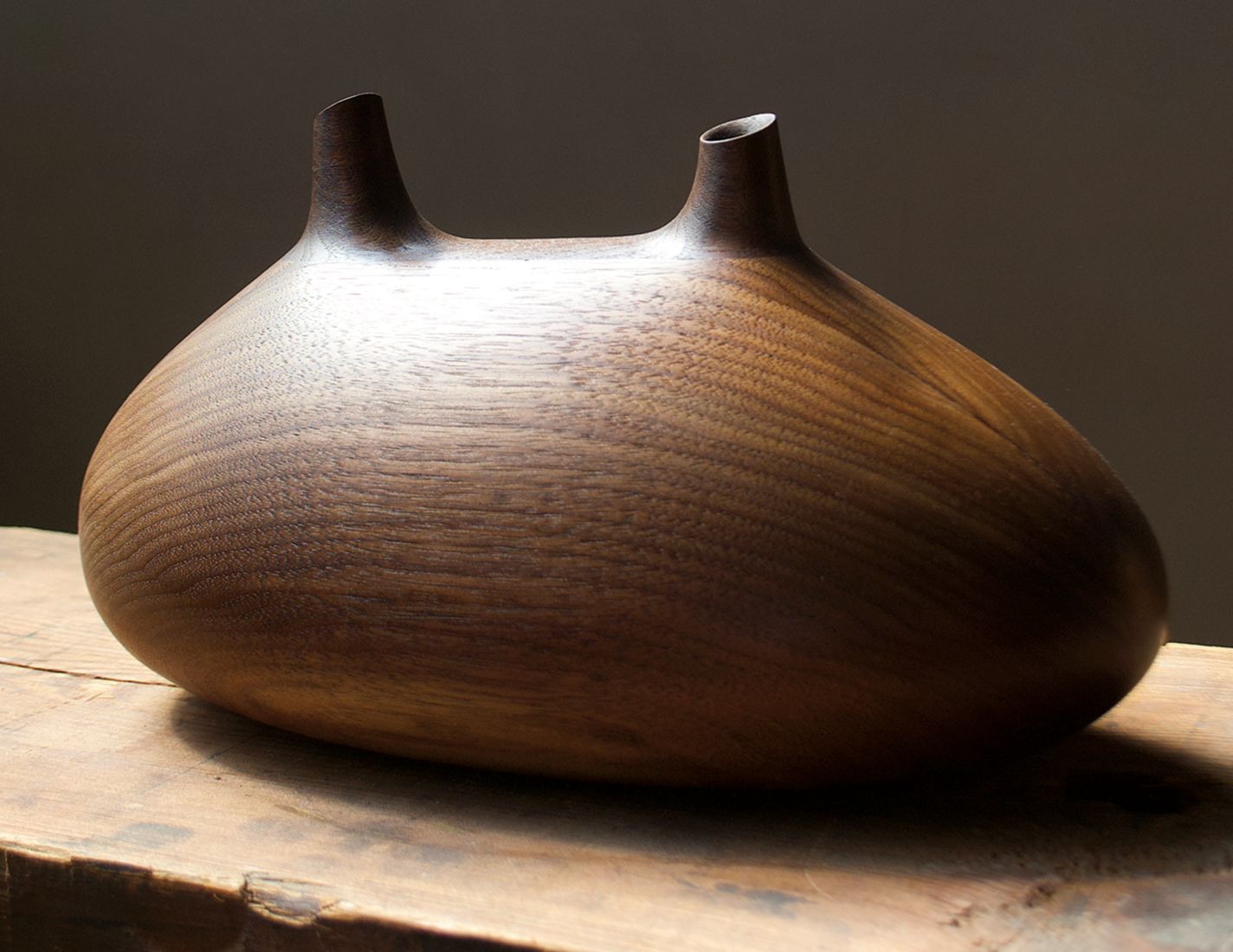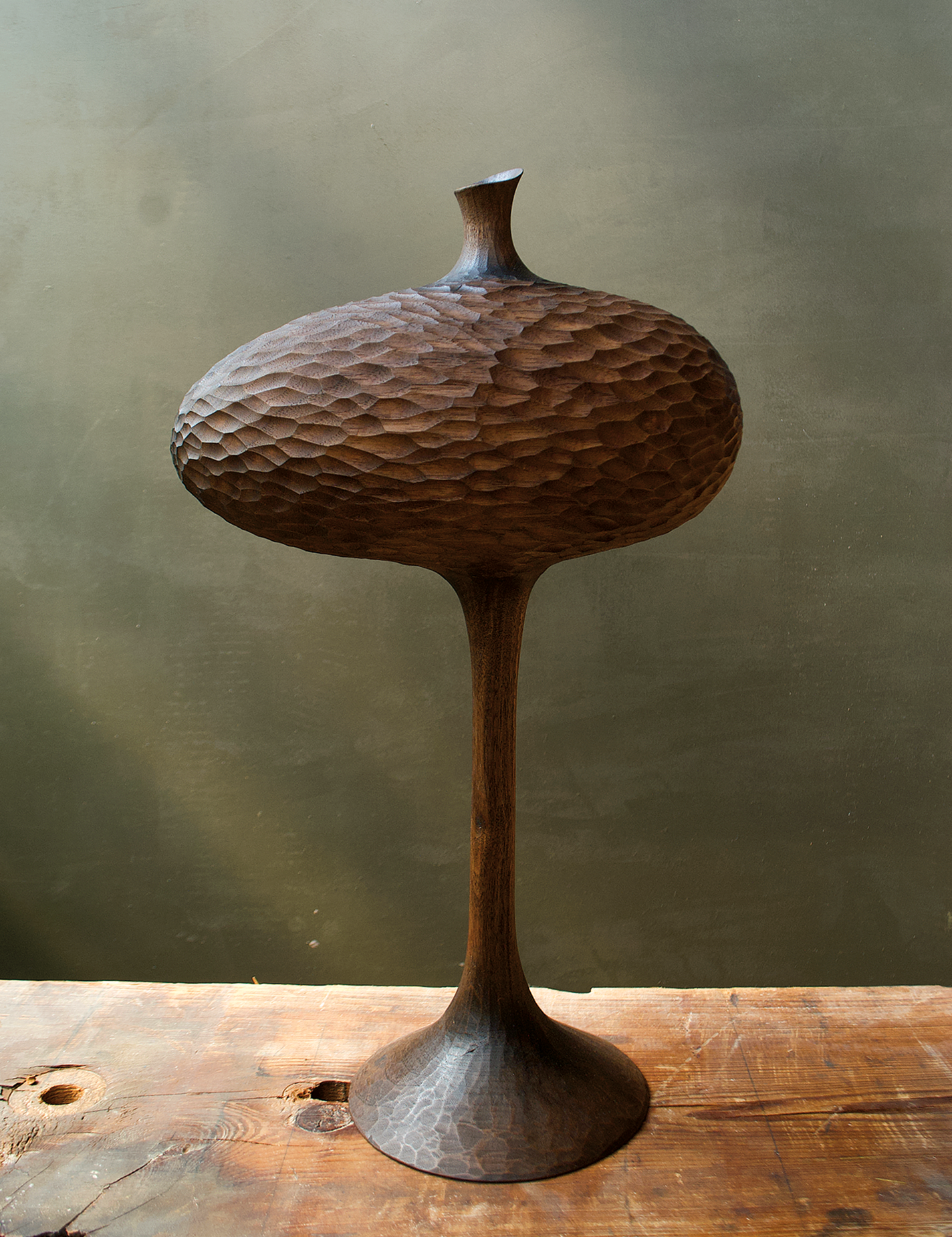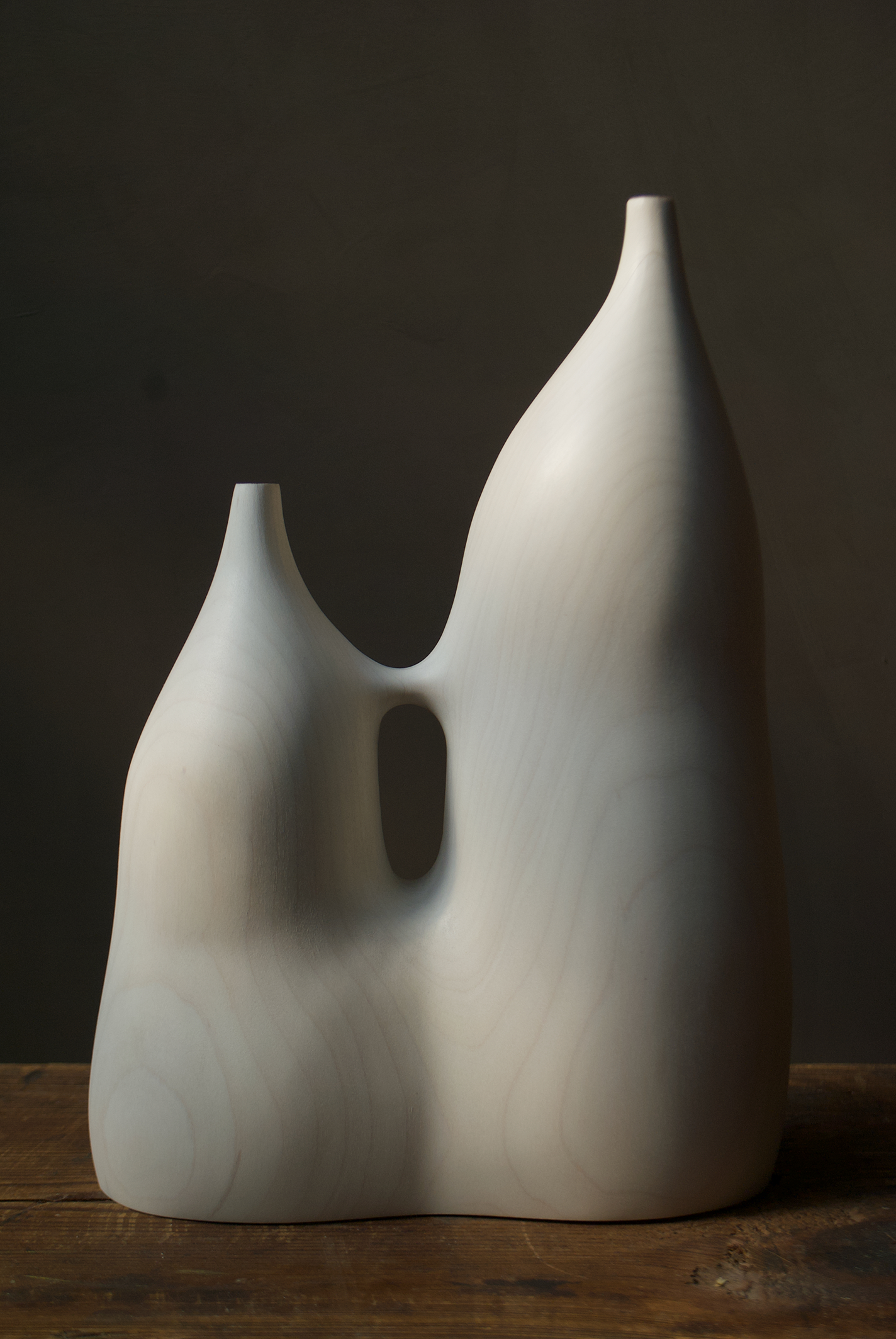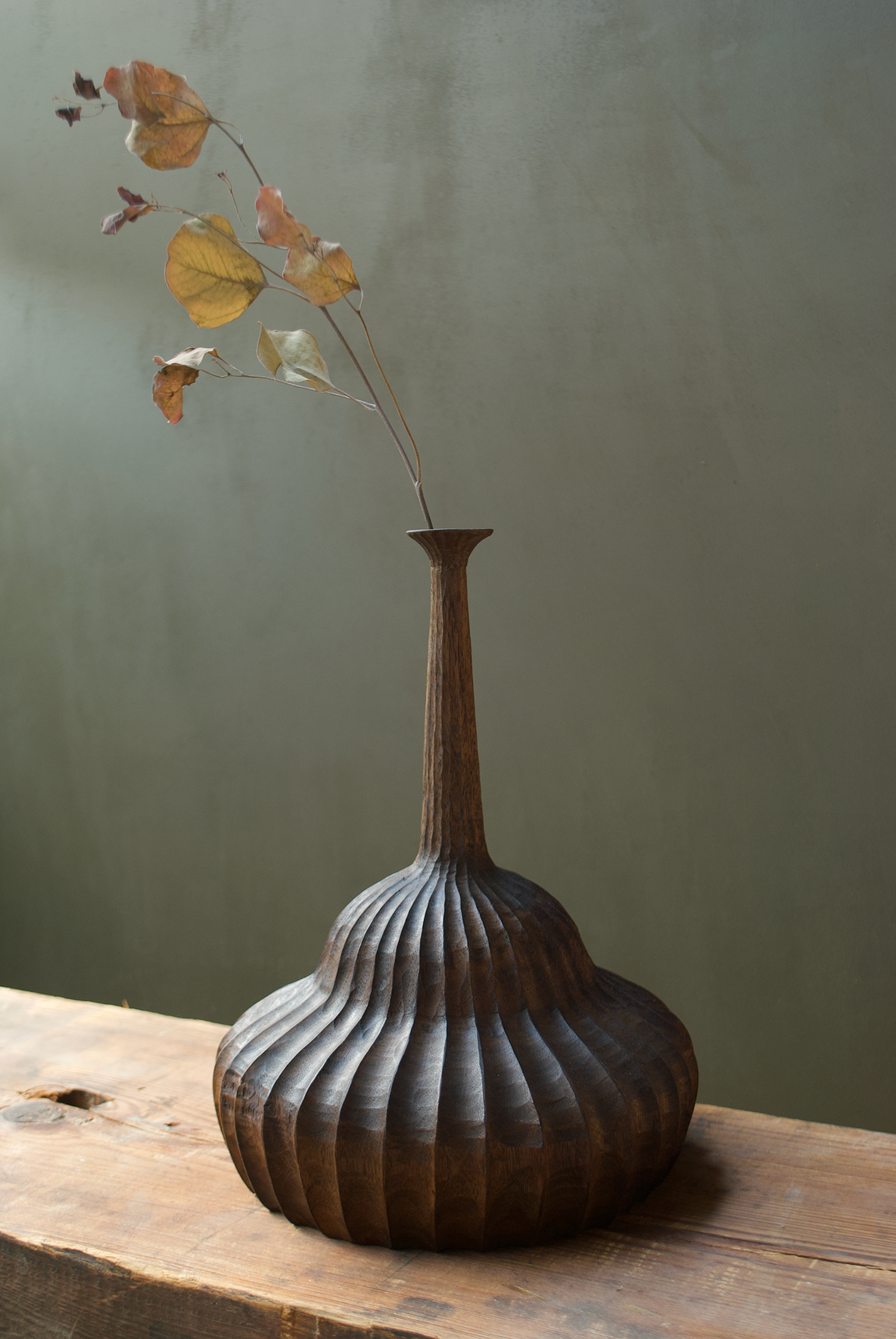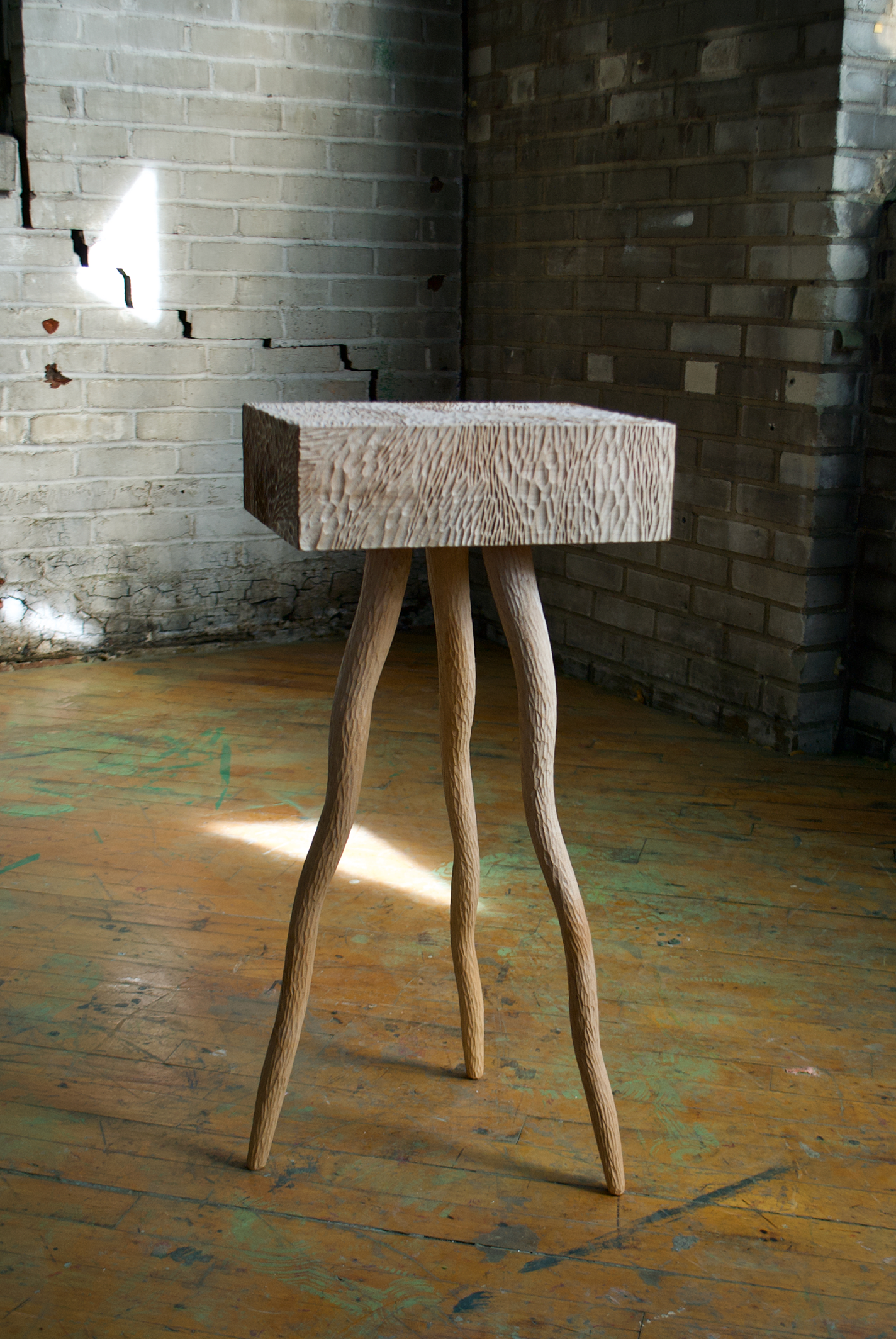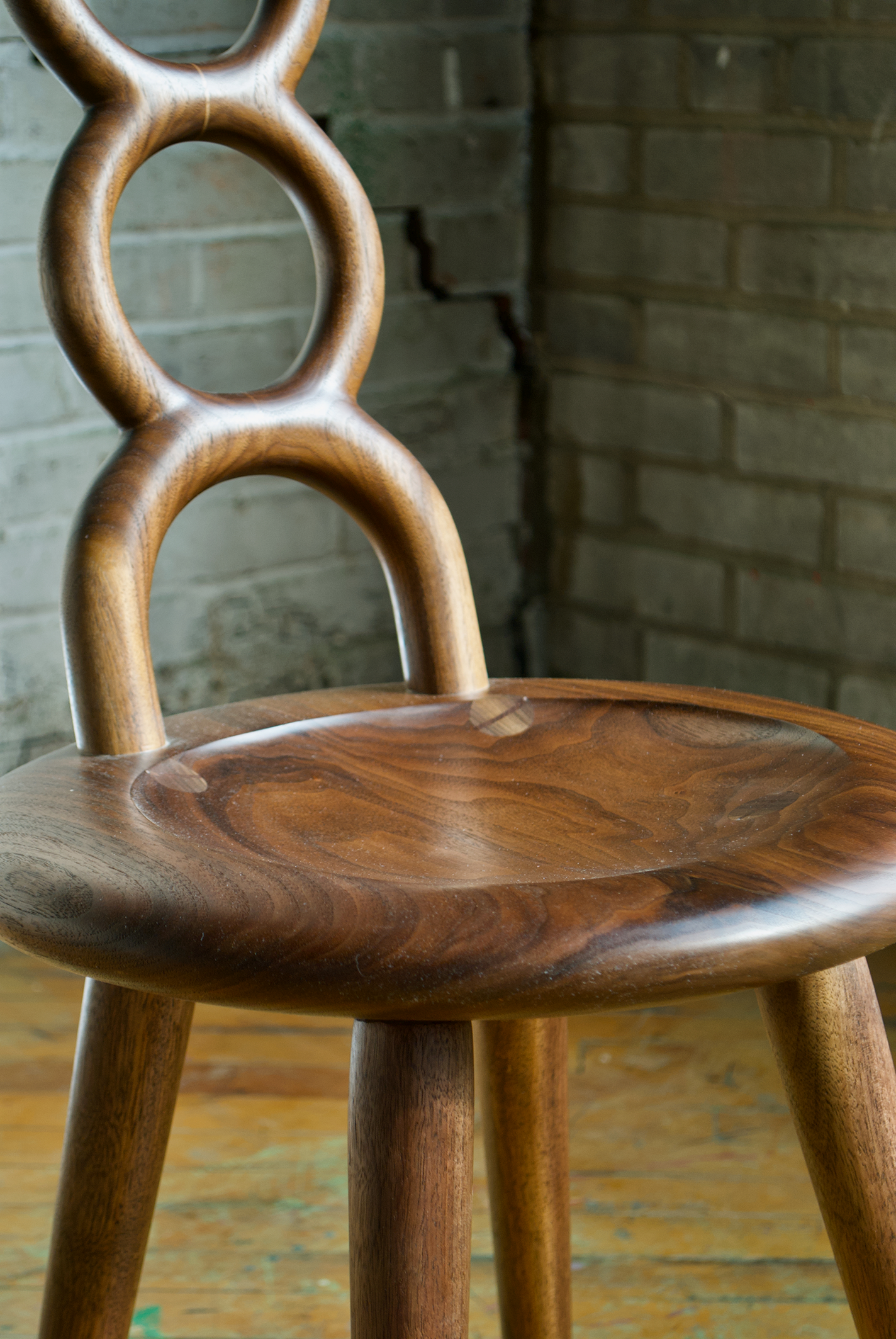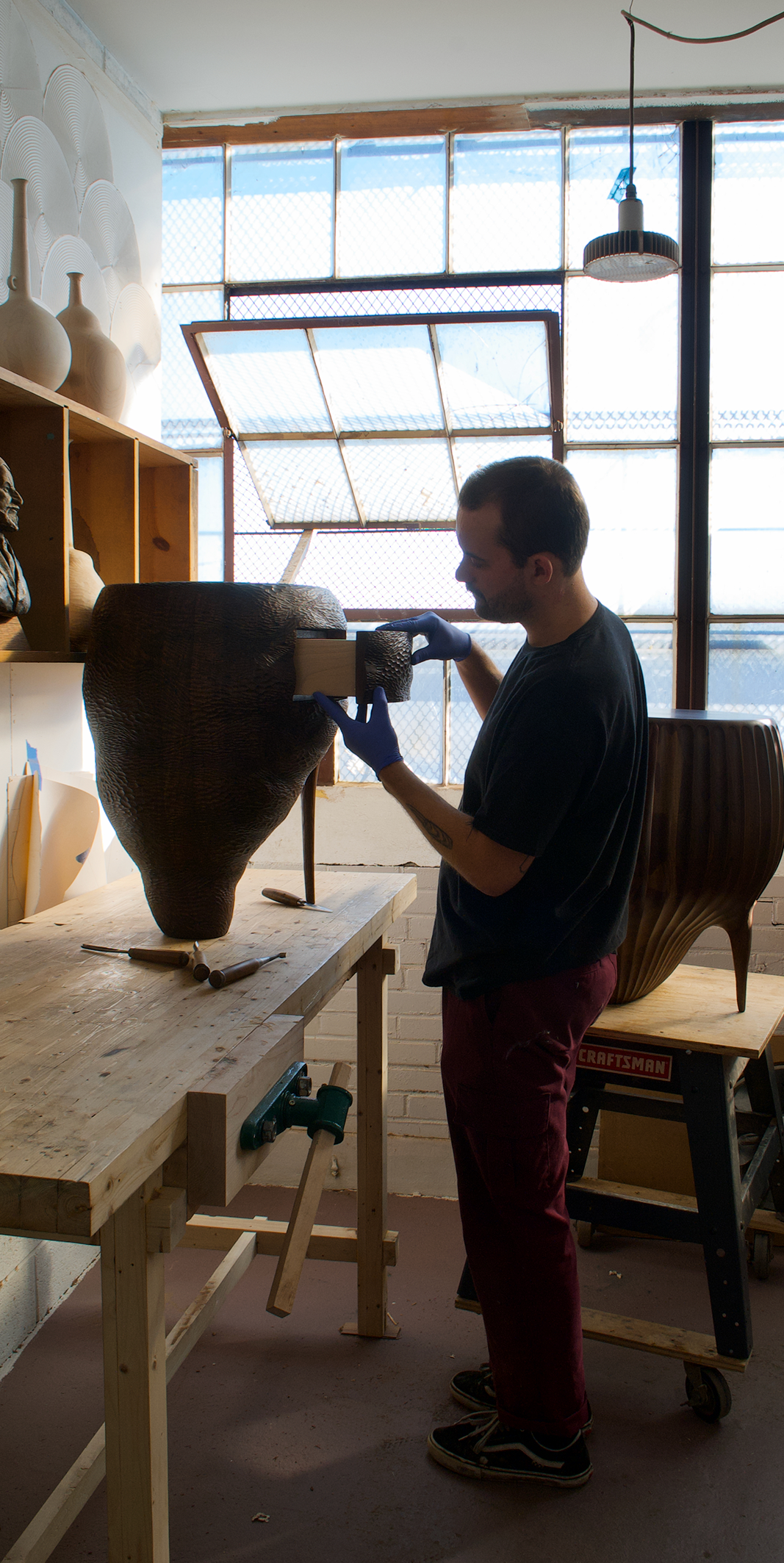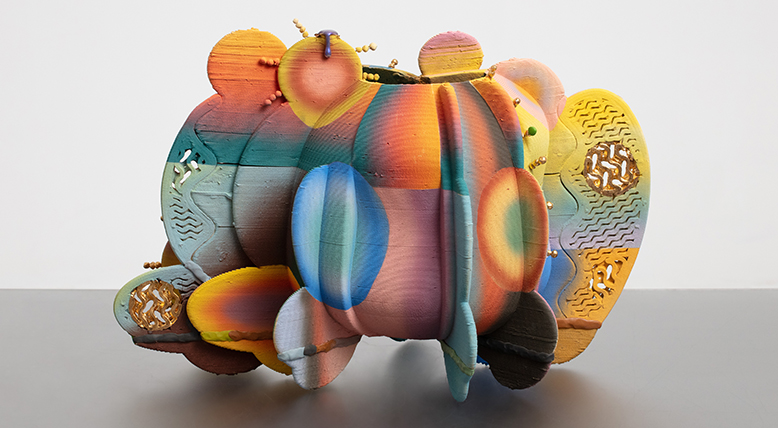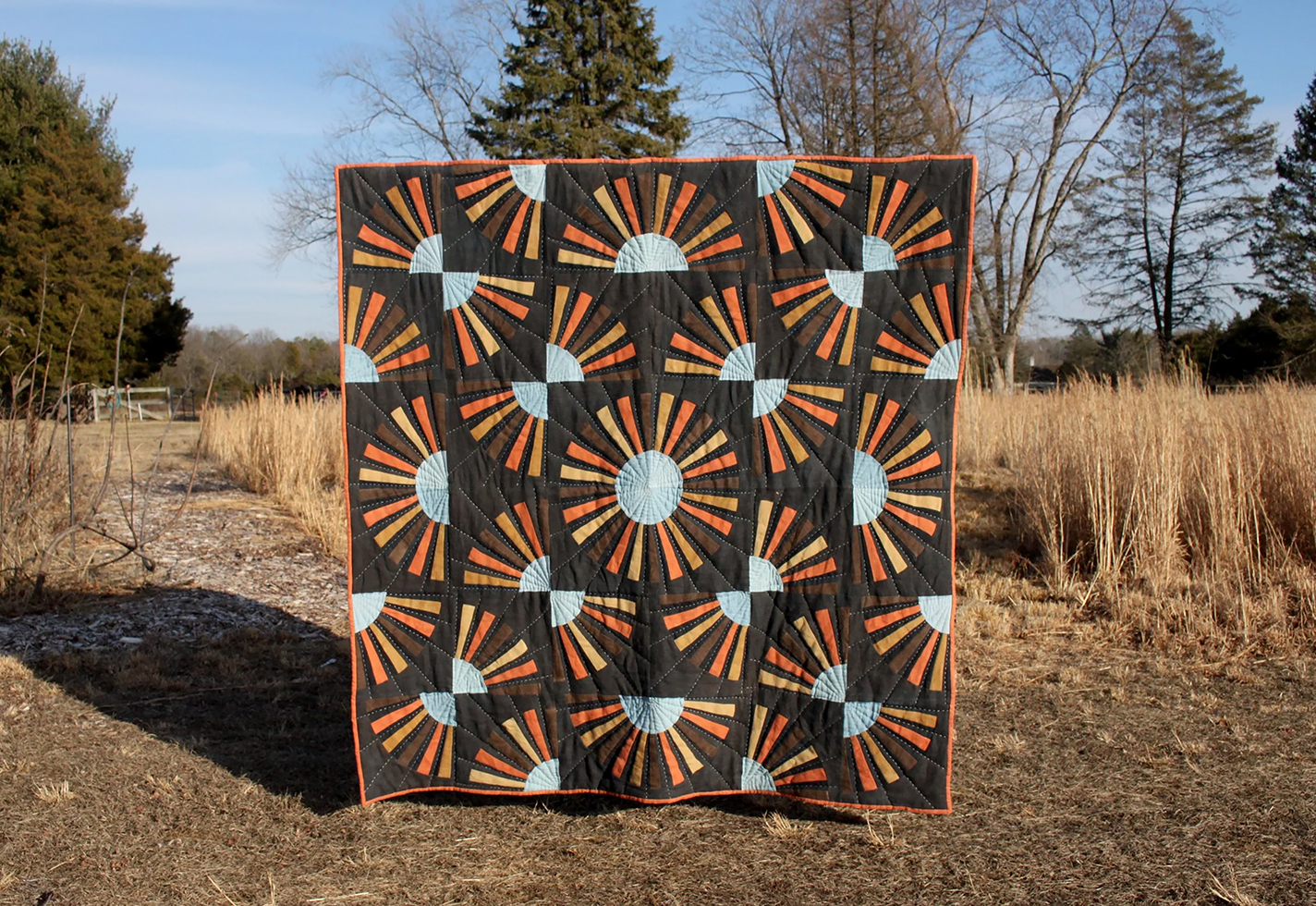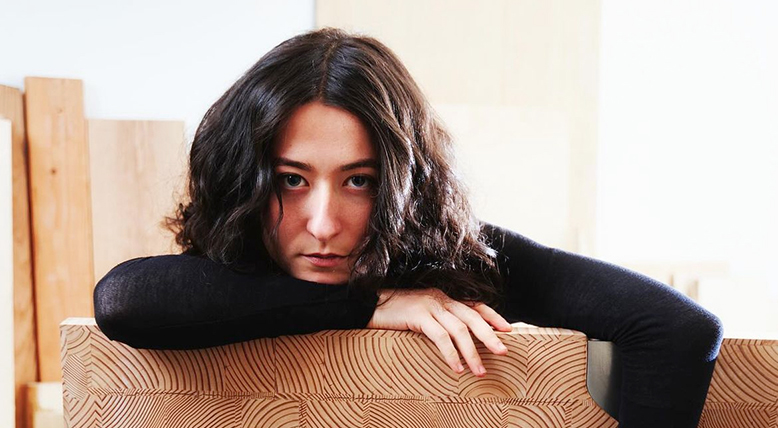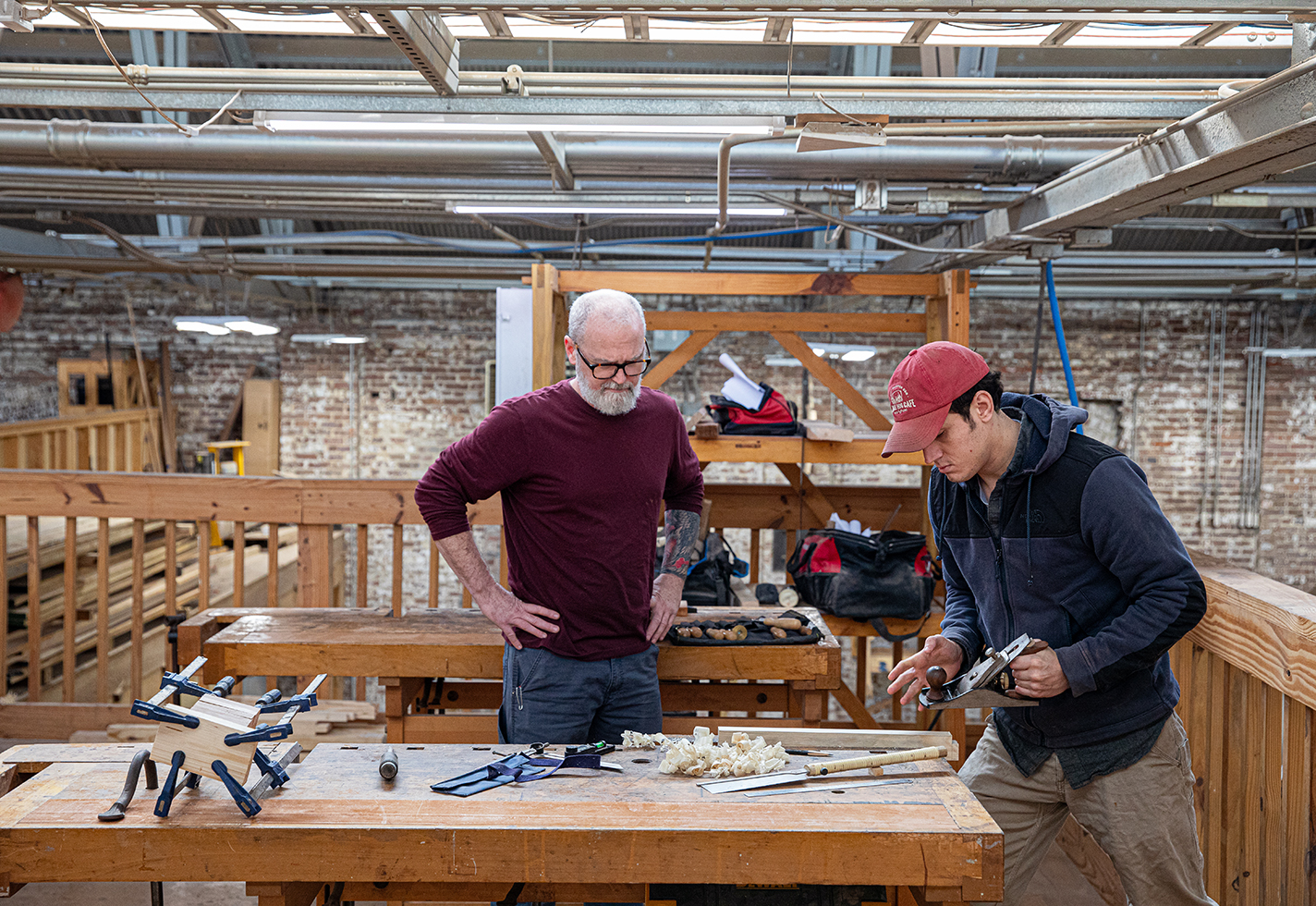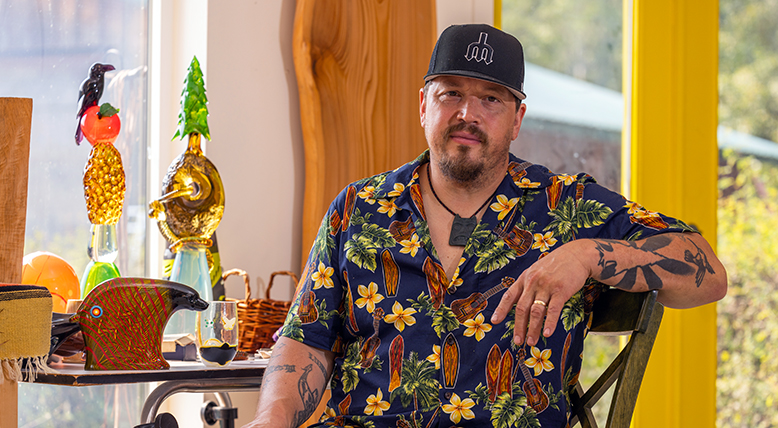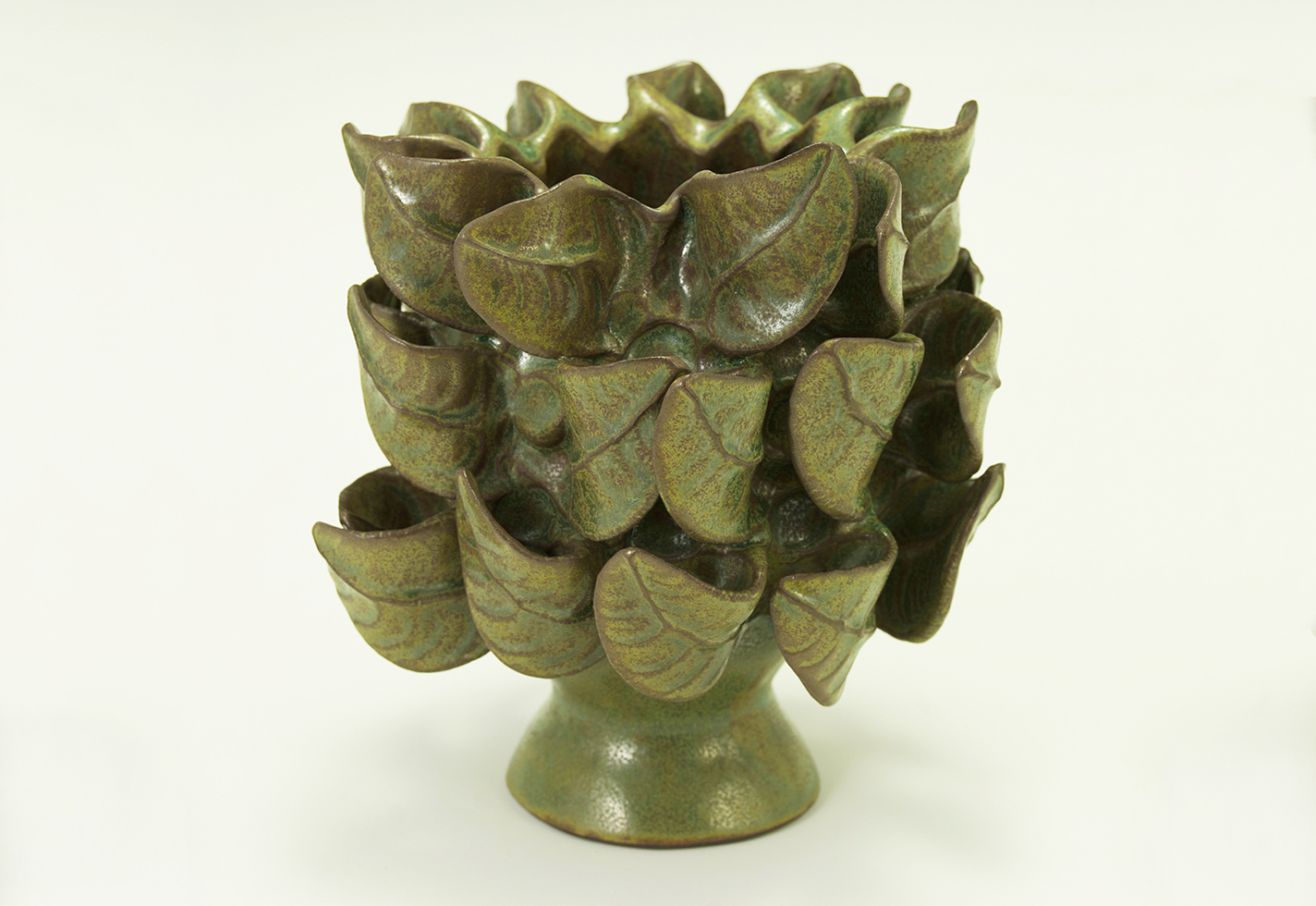“In one way or another, I’ve been connected to woodcraft all my life,” Ashley Joseph Martin tells me over the phone. He’s calling from Newfoundland, in the far reaches of eastern Canada, where he’s traveled to spend some time away from his seven-days-a-week schedule and think about the future of his craft.
Martin has had a big year: He established a relationship with Moderne Gallery in Philadelphia, one of the most renowned design galleries in the country, and, for the first time, exhibited some of his handmade furniture at Design Miami. During our chat, he talks at length about his modest roots in rural Pennsylvania, mentioning a pocket knife his cabinetmaker father gave him nearly two decades ago, and which Martin used in his very first forays into wood carving.
His toolbox has grown considerably since then. In the past couple of years, Martin has caught the eye of exhibitors and collectors by creating complex, strangely shaped objects in walnut and maple: nightstands, coffee tables, lamps, and decorative vessels whose silhouettes spark the imagination by evoking almost anything it can conjure: a wasp’s nest, a Tolkienesque forest dweller, even a protozoan. One of the pieces he showed at Design Miami’s inaugural Los Angeles show in May is a side table that looks like a leaning beehive, prevented from keeling over by two slim sinuous legs. Right at the center of its bulbous body is a delicate little drawer. The entire thing has a textured surface, with repetitive indentations that, as a whole, resemble the windswept floor of the Sahara Desert.
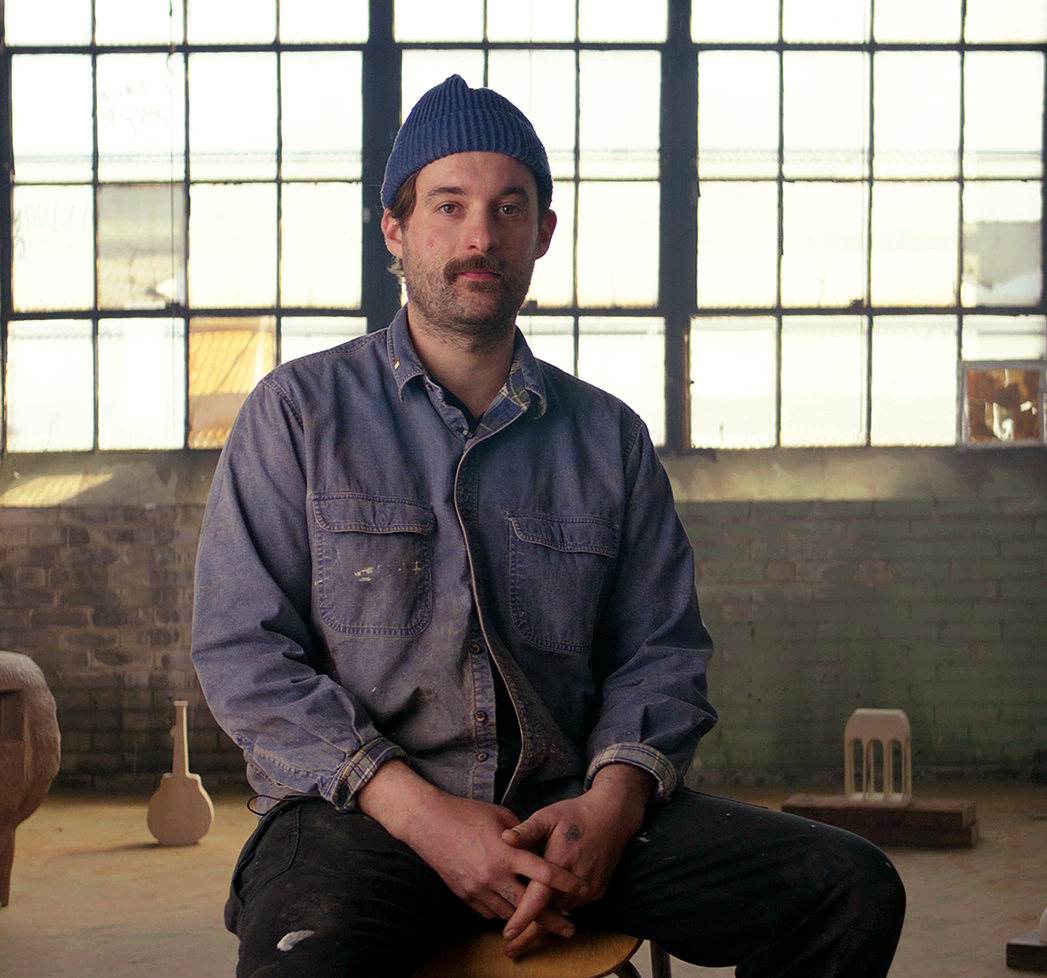
Ashley Joseph Martin in his Philadelphia studio.
